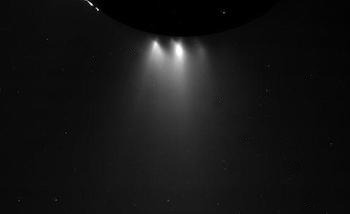THIS IS REBLOG RELEVANT FOR ONLY TODAY IN THE WHOLE OF HUMAN HISTORY AND ITS FUTURE



THIS IS REBLOG RELEVANT FOR ONLY TODAY IN THE WHOLE OF HUMAN HISTORY AND ITS FUTURE
More Posts from Theidlerhour and Others

Utagawa Kuniyoshi, Cats for the 53 stations of the Tokaido, 1847 - 1850. Japan. Via Rijksmuseum
Solar System: 5 Things to Know This Week
Our solar system is huge, so let us break it down for you. Here are 5 things to know this week:
1. Letting the Air Out

The atmosphere on Mars is whisper-thin and drier than bone–but it wasn’t always that way. For the past year, the MAVEN mission has been orbiting the planet, piecing together clues about what happened to all the air on Mars. At 2 p.m. EST on Nov. 5, we will hold a briefing on some new findings about the Martian atmosphere. Make sure to tune in on NASA Television.
2. How Much Juno about Jupiter?

We’re all going to know a lot more about the king of planets soon, thanks to the Juno mission. Juno’s project scientist will be giving a live lecture on Nov. 5 and 6 to explain what discoveries might await and how the spacecraft is expected to survive Jupiter’s dangerous radiation environment for over a year, long enough to make over 30 close polar passes. Watch the live lecture HERE.
3. Excitement at Enceladus

Our Cassini spacecraft has returned stunning images from its ultra-close flyby of Saturn’s active moon Enceladus on Oct. 28. The photos are providing a quick look at Enceladus and its plume of icy vapor from the moon’s geysers. But some of the most exciting science is yet to come, as scientists will be poring over data from Cassini’s instruments to see what they detected as they flew through the plume.
4. A New Dimension in Lunar Landscapes

The Lunar Reconnaissance Orbiter maps the moon in boulder-by-boulder detail daily. The team that operates the spacecraft’s most powerful camera has been releasing 3D versions of its high-resolution looks at the surface. You can see depth and detail in the pictures if you can get or make some red-blue glasses.
5. Pluto in Perspective

The New Horizons spacecraft has fired its engines again as it carries out a series of four maneuvers propelling it toward an encounter with the ancient Kuiper Belt object 2014 MU69, a billion miles farther from the sun than Pluto. Meanwhile, it continues the ongoing download of data from the Pluto encounter, including this recent stunner.
Make sure to follow us on Tumblr for your regular dose of space: http://nasa.tumblr.com
If Earth had Saturn’s Rings
From an excellent post by Jason Davis
From Washington, D.C., the rings would only fill a portion of the sky, but appear striking nonetheless. Here, we see them at sunrise.

From Guatemala, only 14 degrees above the equator, the rings would begin to stretch across the horizon. Their reflected light would make the moon much brighter.

From Earth’s equator, Saturn’s rings would be viewed edge-on, appearing as a thin, bright line bisecting the sky.

At the March and September equinoxes, the Sun would be positioned directly over the rings, casting a dramatic shadow at the equator.

At midnight at the Tropic of Capricorn, which sits at 23 degrees south latitude, the Earth casts a shadow over the middle of the rings, while the outer portions remain lit.

via x

Indian rocket rises through the atmosphere carrying a billion dreams and hopes along with its payload.



Check out these scientists reacting to the first images from the Hubble Space Telescope after they successfully fixed its wonky mirror.
Then watch our music video celebrating Hubble here.
Then read all about Hubble’s 25 years in space here.
"To paraphrase Walt Whitman: 'You are vast. You contain multitudes. Now let them live.'"
We are living in a fake world; we are watching fake evening news. We are fighting a fake war. Our government is fake. But we find reality in this fake world.
Haruki Murakami, in an interview with the Paris Review (via bookishmadness)

Mt. Fuji and Sekiyadojo castle at dusk, Chiba, Japan via GANREF
-
 cybertroonian liked this · 1 month ago
cybertroonian liked this · 1 month ago -
 lovemydiaper liked this · 1 month ago
lovemydiaper liked this · 1 month ago -
 multifandomcutie13 liked this · 1 month ago
multifandomcutie13 liked this · 1 month ago -
 peter-the-penguin liked this · 2 months ago
peter-the-penguin liked this · 2 months ago -
 lashbrook11 liked this · 4 months ago
lashbrook11 liked this · 4 months ago -
 831honey reblogged this · 4 months ago
831honey reblogged this · 4 months ago -
 ryunchanstuffsblog liked this · 4 months ago
ryunchanstuffsblog liked this · 4 months ago -
 trueankhatm liked this · 6 months ago
trueankhatm liked this · 6 months ago -
 cgomeschaves liked this · 6 months ago
cgomeschaves liked this · 6 months ago -
 noodle-armed-artist liked this · 6 months ago
noodle-armed-artist liked this · 6 months ago -
 anna0vu7g liked this · 6 months ago
anna0vu7g liked this · 6 months ago -
 annita89qav7a9uh liked this · 6 months ago
annita89qav7a9uh liked this · 6 months ago -
 annaxdjzq liked this · 6 months ago
annaxdjzq liked this · 6 months ago -
 annau902a liked this · 6 months ago
annau902a liked this · 6 months ago -
 annalgyrg liked this · 6 months ago
annalgyrg liked this · 6 months ago -
 annita89v5a8zjh liked this · 6 months ago
annita89v5a8zjh liked this · 6 months ago -
 homeybee liked this · 7 months ago
homeybee liked this · 7 months ago -
 sseanettles reblogged this · 7 months ago
sseanettles reblogged this · 7 months ago -
 annita891rirs55bh liked this · 7 months ago
annita891rirs55bh liked this · 7 months ago -
 annita89zo9gwblyh liked this · 7 months ago
annita89zo9gwblyh liked this · 7 months ago -
 panelita-200 liked this · 8 months ago
panelita-200 liked this · 8 months ago -
 the-letter-horror-lover liked this · 9 months ago
the-letter-horror-lover liked this · 9 months ago -
 humongousdreamershark liked this · 10 months ago
humongousdreamershark liked this · 10 months ago -
 perennii liked this · 11 months ago
perennii liked this · 11 months ago -
 potat0paladin liked this · 11 months ago
potat0paladin liked this · 11 months ago -
 mormaximumgoatee865 liked this · 11 months ago
mormaximumgoatee865 liked this · 11 months ago -
 marcopommy liked this · 1 year ago
marcopommy liked this · 1 year ago -
 larry-is-my-anchor1 liked this · 1 year ago
larry-is-my-anchor1 liked this · 1 year ago -
 glorioussheepfox liked this · 1 year ago
glorioussheepfox liked this · 1 year ago -
 ochpoch liked this · 1 year ago
ochpoch liked this · 1 year ago -
 avaultofmypast reblogged this · 1 year ago
avaultofmypast reblogged this · 1 year ago -
 sleepydreameroncloud9 reblogged this · 1 year ago
sleepydreameroncloud9 reblogged this · 1 year ago -
 deisegal liked this · 1 year ago
deisegal liked this · 1 year ago -
 idealfitnessdublin liked this · 1 year ago
idealfitnessdublin liked this · 1 year ago -
 zetsubonoheishi liked this · 1 year ago
zetsubonoheishi liked this · 1 year ago -
 an-unemployed-youth liked this · 1 year ago
an-unemployed-youth liked this · 1 year ago -
 sol-domino liked this · 1 year ago
sol-domino liked this · 1 year ago -
 luewashere liked this · 1 year ago
luewashere liked this · 1 year ago -
 dmc345-blog liked this · 1 year ago
dmc345-blog liked this · 1 year ago
"To awaken my spirit through hard work and dedicate my life to knowledge... What do you seek?"
229 posts










